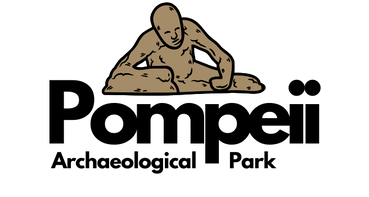Hercules in Campania: Mythology, Art, and Popularity in Ancient Times
Table of Contents
The Hero Who Conquered More Than Monsters
Campania, a land of fertile soil and looming volcanoes, didn’t just live on trade and wine. It lived on stories. And no story carried more weight than that of Hercules. For the people of this region, he was not just a hero from faraway Greece. Hercules in Campania became part of the very landscape — carved into stone, painted on walls, invoked in prayers whispered before journeys.
Why Hercules?
Think about Campania for a moment. Oscan tribes, Greek settlers, Etruscans, and later the Romans all crossed paths here. It was noisy, mixed, sometimes chaotic. In such a setting, Hercules made perfect sense. To Greeks he was Herakles, to Romans Hercules Invictus — unconquered, eternal. Strong, stubborn, close to the gods yet also painfully human. He fought, he failed, he bled, but he endured. Who better to symbolize a region always balancing between powers?
Hercules in Pompeii

Pompeii gives us plenty of clues about his importance. The Doric Temple in the Triangular Forum, among the city’s oldest shrines, is thought to honor Hercules — perhaps even alongside Athena. Built in the 6th century BC, its Greek style reminds us how connected Pompeii was to Hellenic traditions long before Roman rule.
But devotion went beyond stone columns. Walk Pompeii’s streets and you’ll find Hercules in graffiti, scratched casually on walls. You’ll see him in lararia, the household shrines where families honored protective gods. His presence was everywhere: in temples, shops, and homes. He wasn’t a distant figure — he was part of daily survival.
Herculaneum: Hercules in Color
If Pompeii gave us Hercules in marble and inscription, Herculaneum preserved him in vivid frescoes. The College of the Augustales holds two spectacular paintings: one showing Hercules welcomed to Olympus, another depicting his struggle with the river-god Achelous. These weren’t side decorations. They dominated the hall, reminding anyone who entered that Hercules was tied not just to myth, but to civic life and even imperial ideology.
Elsewhere in Herculaneum, another painting shows him discovering the infant Telephus — proof that people admired not only his strength but his role as a father figure, a guide, a civilizer.
Recognizing the Hero

Hercules in Campania was easy to spot. Muscular, draped in a lion’s skin, holding a club — sometimes standing beside an altar or with companions from myth. This image appeared again and again: on mosaics, amphorae, statues, even bathhouse walls. Each repetition carried meaning. To some, it was protection. To others, a reminder of resilience. To leaders, a symbol of power worth displaying.
Politics and Power
The Romans, practical as ever, understood the value of Hercules. Local officials dedicated altars or temples to him, linking their names to his strength. Emperors too borrowed his image, blending politics with religion. In Campania, this meant Hercules was both the god of the shopkeeper and the emblem of civic pride.
Why People Loved Him

Yet the real reason Hercules lasted isn’t just politics or art. It’s because he felt close. Unlike gods who lived in untouchable perfection, Hercules suffered. He endured impossible labors, carried punishment, and still rose again. Ordinary people saw their own struggles reflected in his story. Farmers, traders, travelers — all could call on him as someone who knew hardship.
That’s why you find him everywhere, from a grand fresco in a public hall to a small carved figure in a family shrine. He was universal, approachable, and deeply human.
Hercules in Campania
Today the ruins of Pompeii and Herculaneum stand quiet, but the echoes of Hercules in Campania are still there. His temples, paintings, and statues speak of a hero who crossed cultural borders and became part of everyday life.
Walk through the region and you’re never far from his shadow. A broken column in the Triangular Forum, a faded fresco in Herculaneum, a symbol scratched into a wall — all reminders that heroes never really vanish. They settle into the land, into memory, into identity. And in Campania, Hercules remains exactly that: not just a figure of myth, but a companion across centuries.
